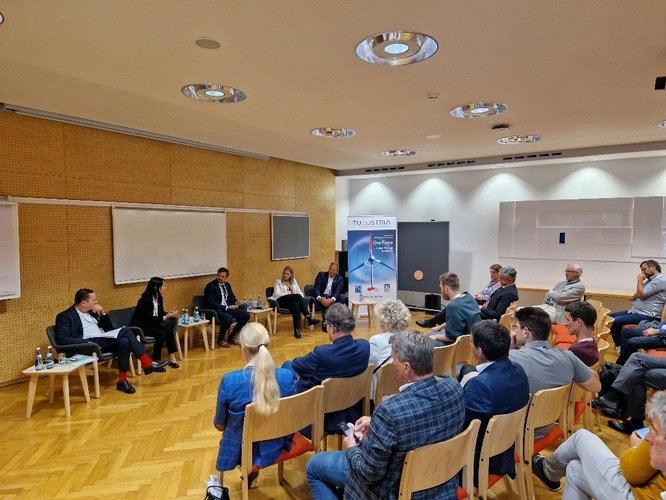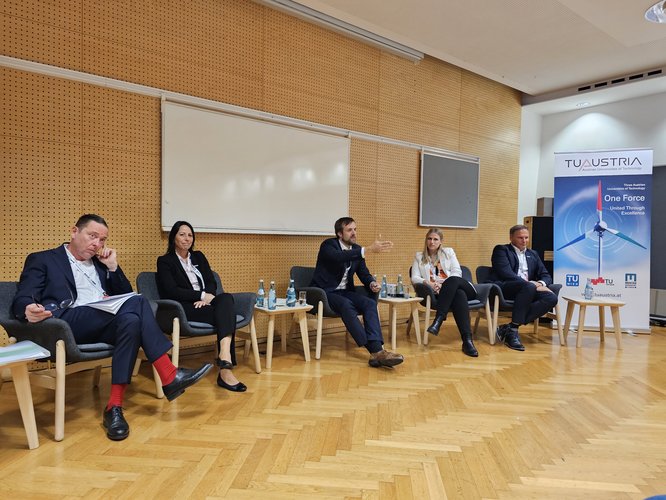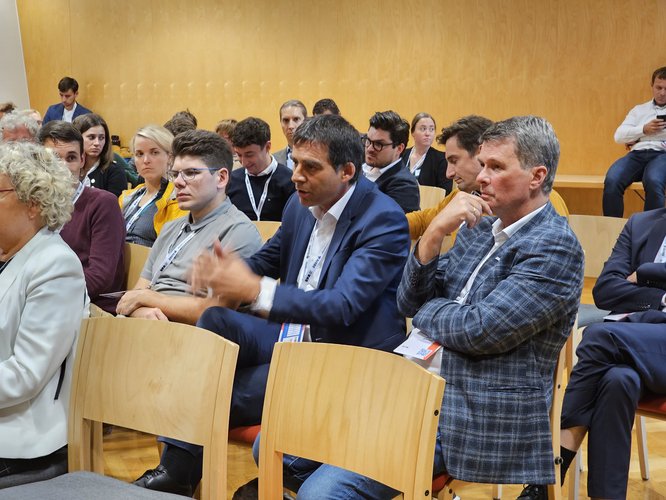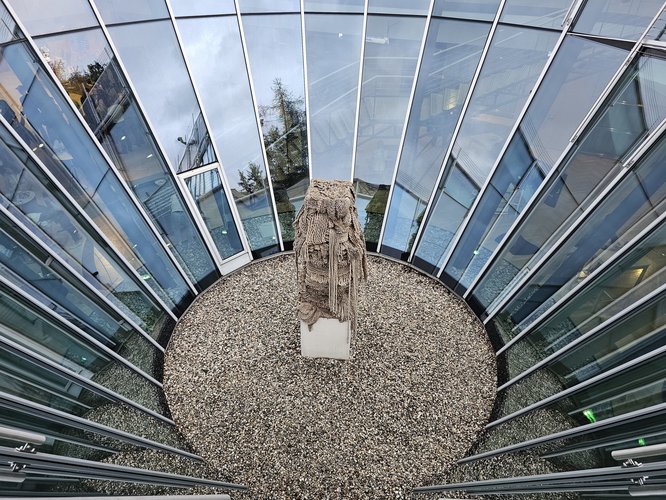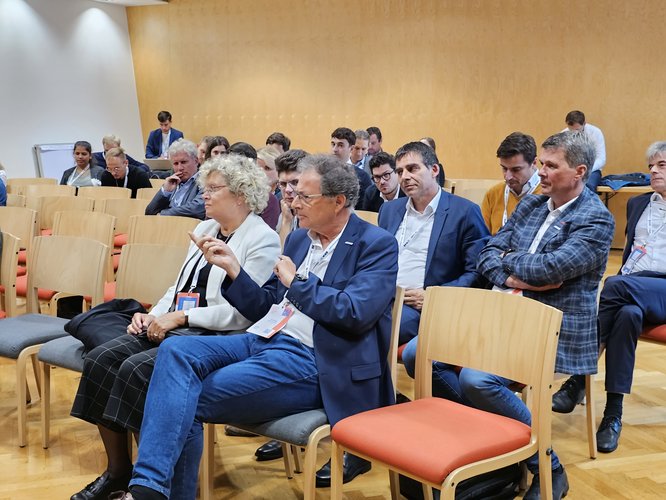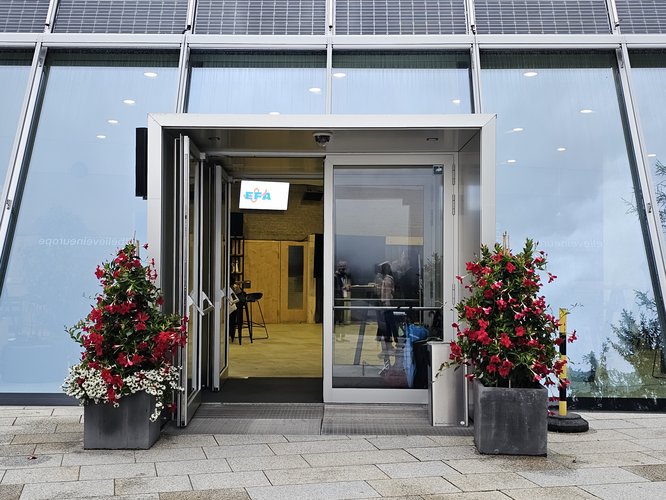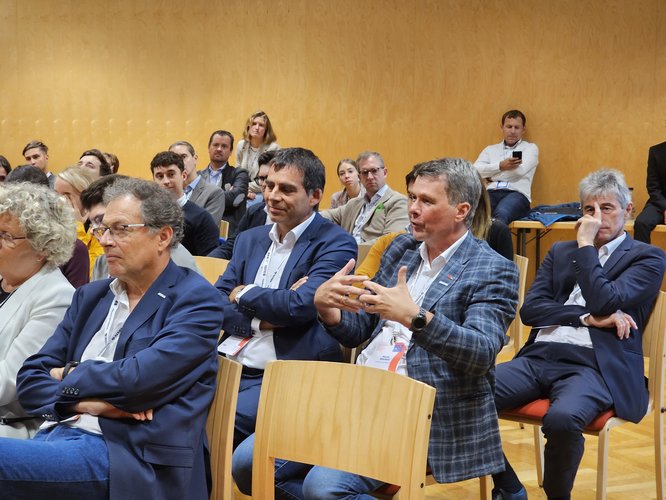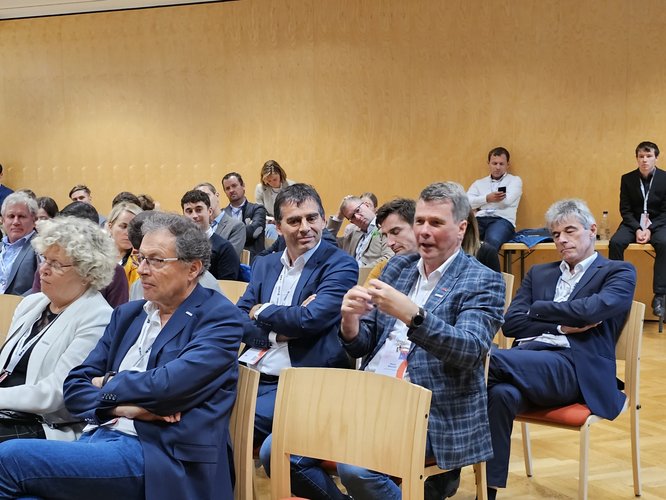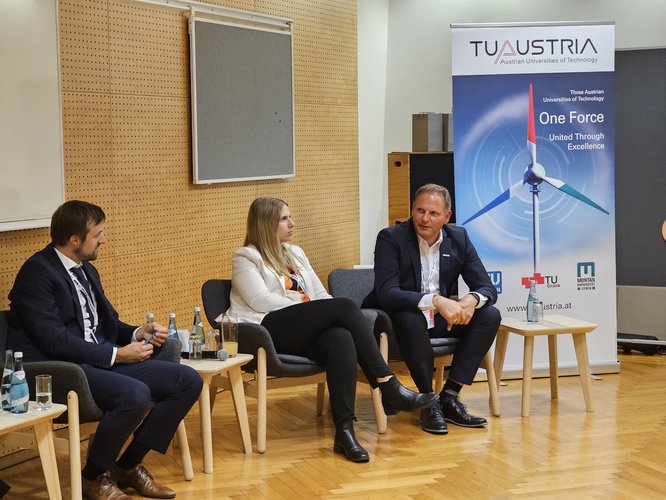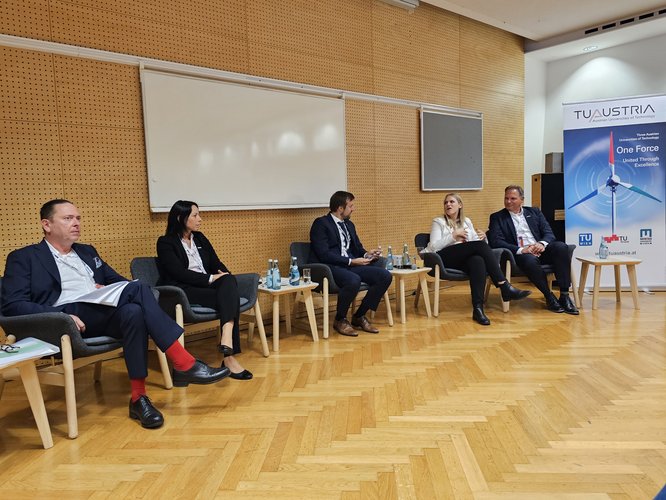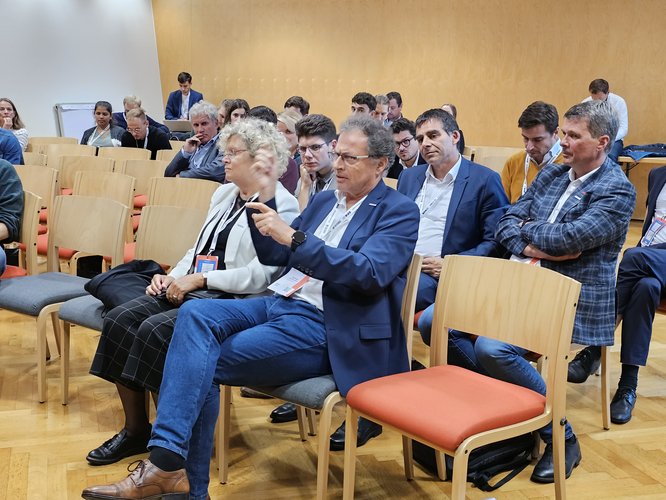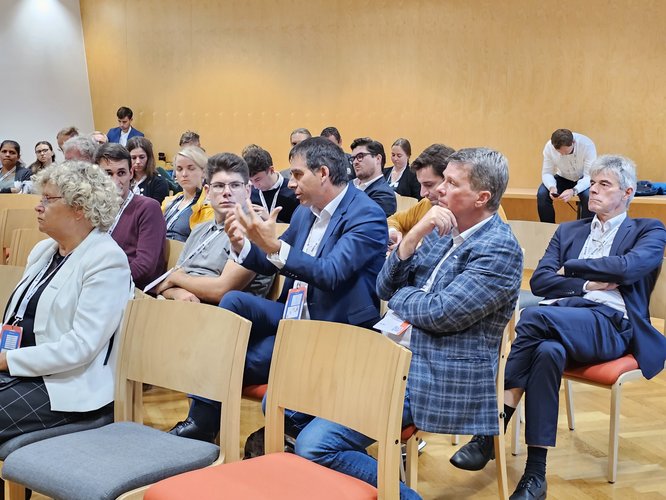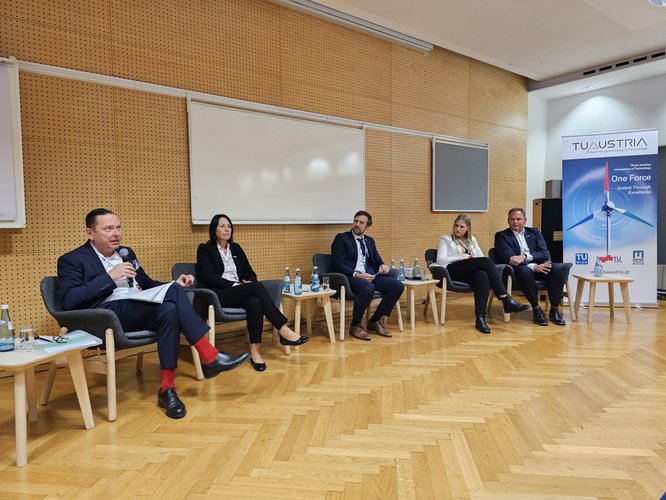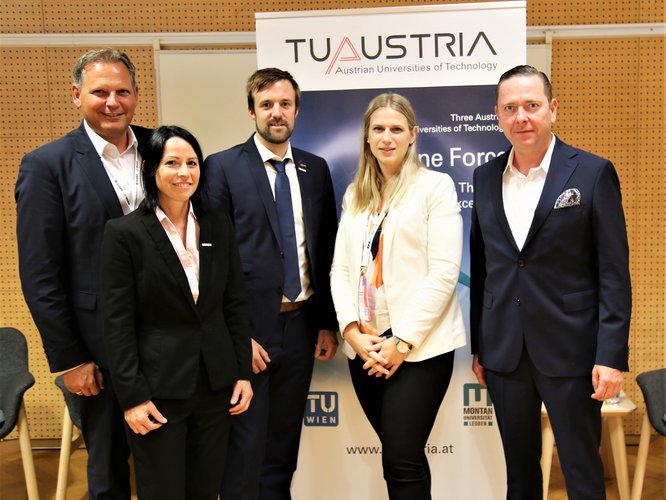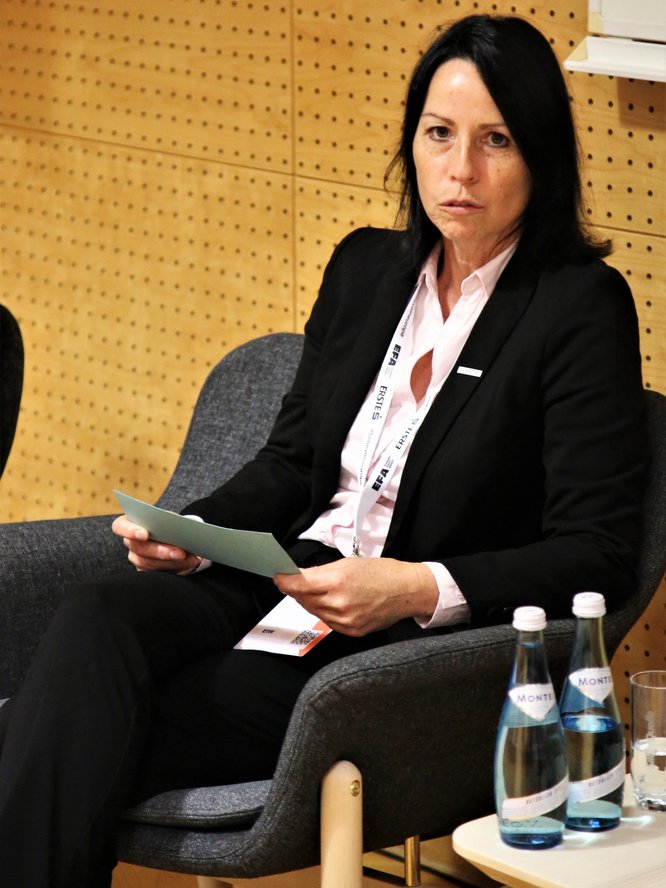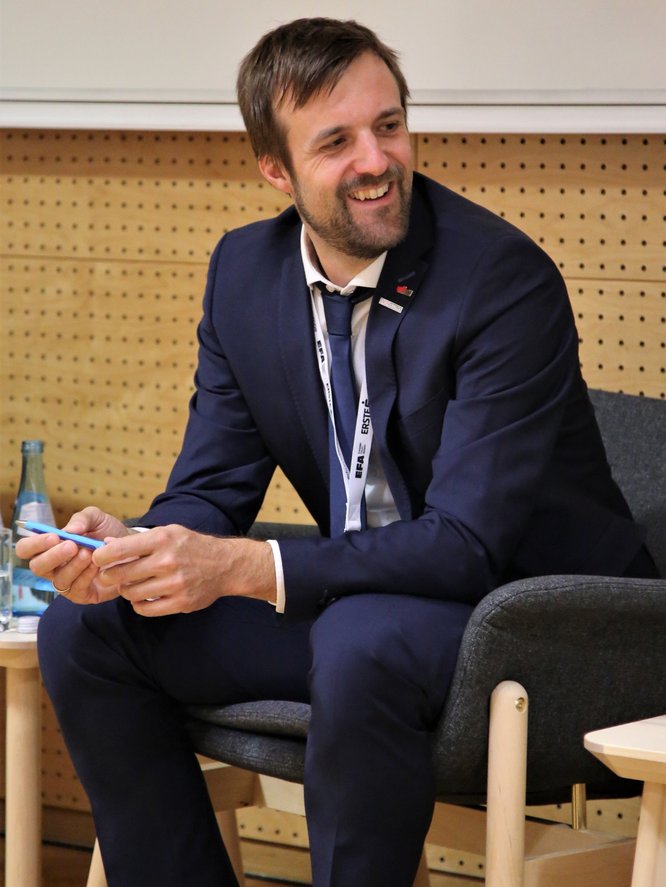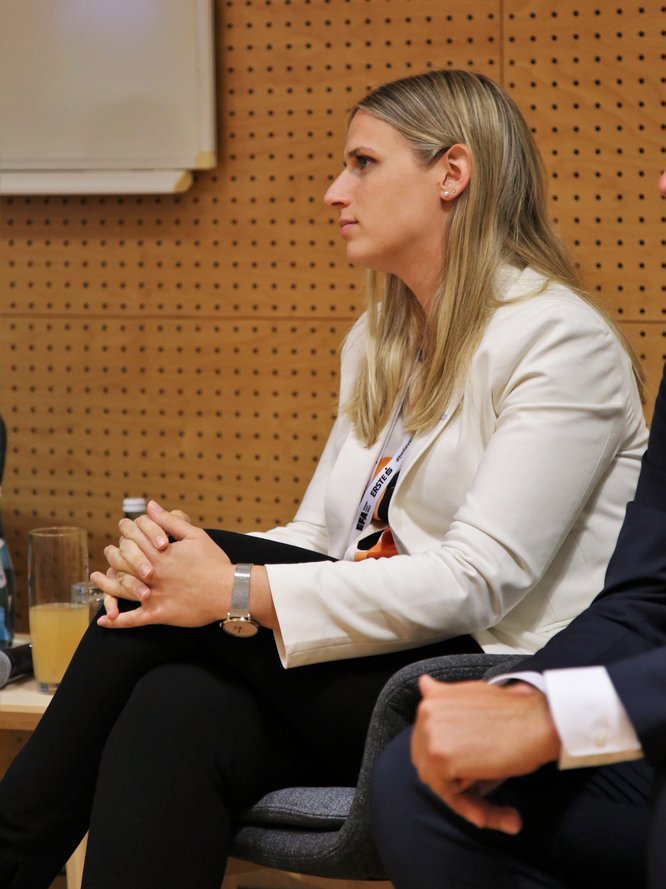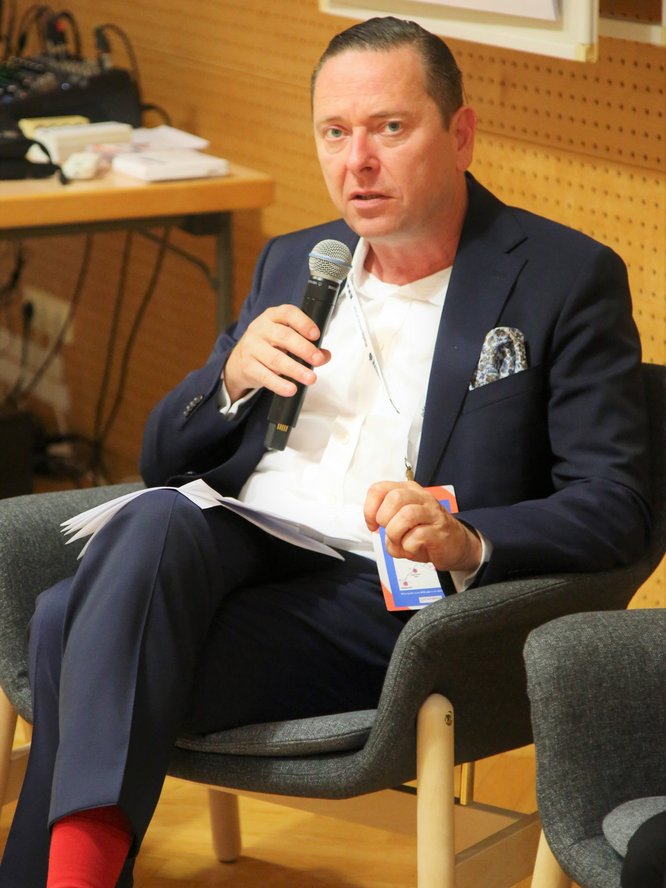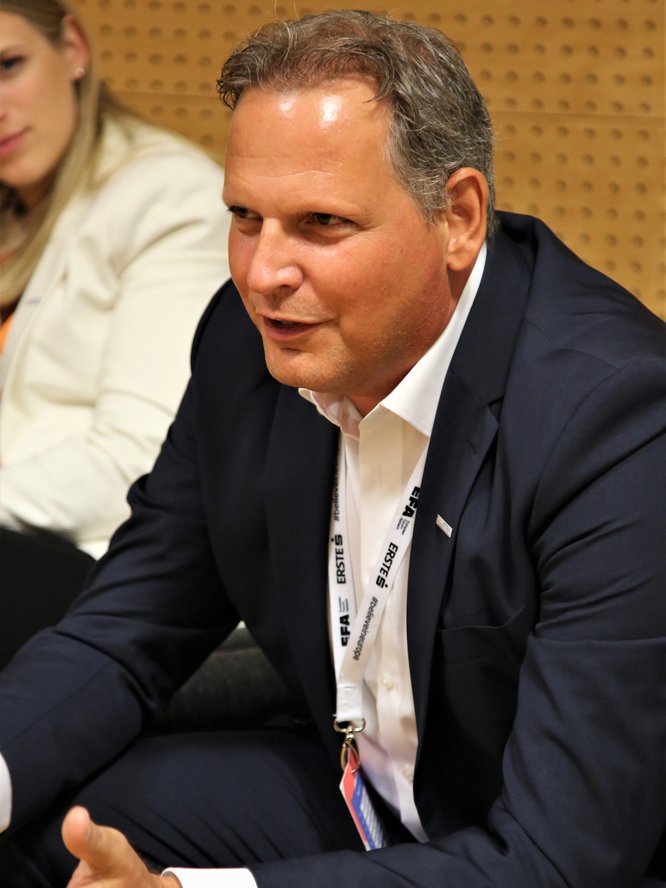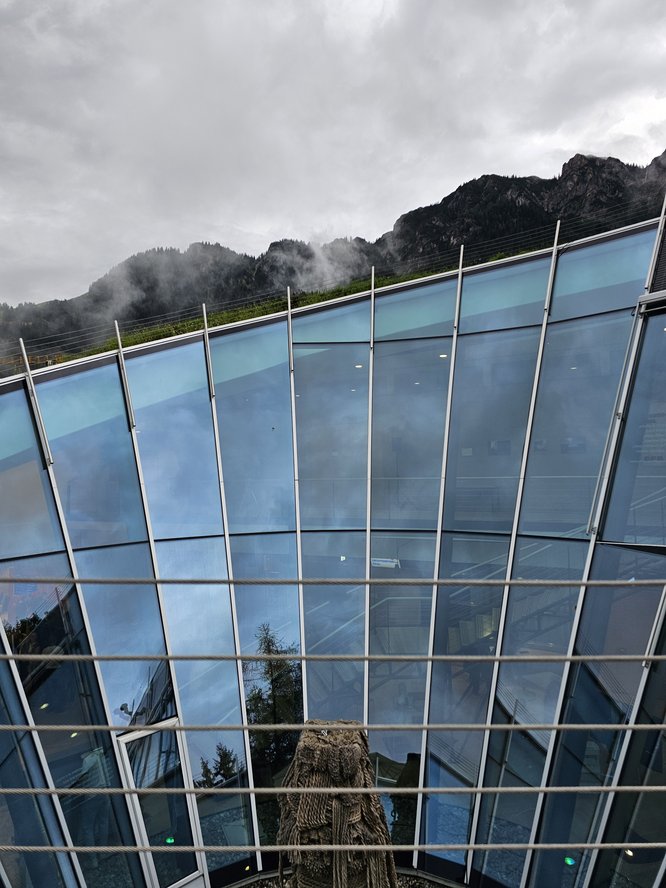UNITY THROUGH GREEN MOBILITY: RAILWAYS AND SUSTAINABILITY
The TU Austria Session held during the EFA 23 conference was a dynamic exploration of the convergence between sustainable mobility and European railways. With the title "Unity Through Green Mobility: Railways and Sustainability," the session dove into the collaborative possibilities for fostering environmentally friendly transportation systems in Europe. This interactive discussion aimed to strengthen internal European partnerships, thereby diminishing external influences and dependencies. Diverse stakeholders from industry, politics, research, and society gathered to exchange experiences and best practices, forging ideas to pave the way for a more sustainable future.
The session was opened with a keynote address by Harald Kainz, President of TU Austria and Rector of TU Graz, which set the tone for the ensuing discussions. Guided by the moderation of Ferdinand Pospischil, Head of the Institute for Railway Infrastructure-Design at TU Graz, the session unfolded as an platform for sharing insights and addressing pressing questions.
The session featured compelling presentations from four notable speakers, each contributing a unique perspective on the symbiosis between railways and sustainability in Europe.
Alexander Maximilian Till's Perspective: Infrastructure Challenges and European Cooperation
Alexander Maximilian Till shed light on the mounting strain on European infrastructure due to the surge in ship sizes. He emphasized the disparity between the expansion rate of port infrastructure in Europe and Asia. Concerns were raised over the influence of private shipping companies in ports, potentially conflicting with European interests. Till highlighted the absence of a cohesive European port policy, largely due to competing national interests. He stressed the necessity for devising pan-European solutions to effectively tackle these challenges.
Jaqueline Matijevic's Vision: Shifting to Railways for Sustainable Mobility

Jaqueline Matijevic introduced Austria's national mobility masterplan, with a central focus on transitioning from road to rail transportation. The objective of achieving a 40% rail modal split in freight transportation by 2040 was emphasized. Matijevic sketched three core pillars for enhancing public transportation:
- Significant investments in robust infrastructure, exemplified by ÖBB's unprecedented 19-billion-euro investment plan spanning 2023-2028.
- Expansion of appealing timetable offerings, including the introduction of new rail services and the synchronization of bus and train schedules.
- Commitment to affordability through climate ticket price controls, despite inflation.
She also underscored the importance of diverting cargo from roads to railways and reaffirmed Austria's dedication to supporting research initiatives both at national and European levels.
Claudia Skerbinz's Vision: Unified Green Railways for a United Europe
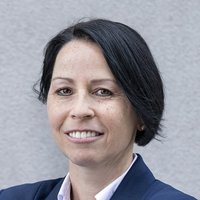
Claudia Skerbinz unveiled a comprehensive strategy for a united Europe based on sustainable railways. The strategy was split into three components: Start, Stop, and Continue.
- Start: Skerbinz highlighted the need for collaboration between operators, regulators, and governments to achieve carbon-neutral transportation across the continent.
- Stop: Fragmentation within railway systems was identified as a barrier to efficiency and progress. The focus was on harmonizing systems across countries to maximize collective results.
- Continue: The emphasis remained on energy-efficient practices and sustainable energy sources, coupled with process standardization and the harnessing of innovation from academia and the tech sector.
Skerbinz envisioned a cohesive and eco-conscious Europe driven by efficient railway systems.
Harald Reisinger's Call for a European, Flexible, and Digital Railway System
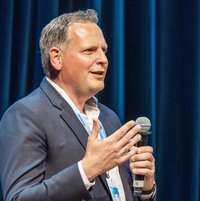
Harald Reisinger addressed challenges in the energy transition, underscoring the ecological and economic significance of railways. He pointed out the stagnation of rail transport shares due to the prevailing national and annual approach, advocating instead for a European-oriented, flexible, and digital system:
- European: Reisinger advocated for the harmonization of rules at the European level to mitigate competitive disadvantages and facilitate seamless cross-border rail transport.
- Flexible: He stressed the need for flexibility in rail transport, particularly for freight. The "Time Table redesign for Smart capacity management" initiative was put forth as a solution.
- Digital: The untapped potential of digitalization in the rail sector was emphasized, calling for increased investment in innovative, short-lifecycle digital solutions.
Throughout the session, the audience actively participated by asking questions, enriching the discourse with their insights. The questions raised added to the challenges of integrating emerging technologies, the feasibility of harmonizing regulations, and the potential economic implications of transitioning to a greener mobility paradigm.
The TU Austria Session concluded by emphasizing the critical role of unity, collaboration, and innovation in advancing green mobility in Europe. Additionally, it highlighted two essential factors:
- Digitalization Potential: Digitalization can significantly enhance resource availability and efficiency in transportation, potentially improving availability by 10-15%. This underscores the importance of embracing digital solutions to optimize transportation systems.
- Consumer Behavior: Consumer choices, particularly in reducing consumption, play a direct role in shaping freight volumes and sustainability. Promoting sustainable consumption is a collective responsibility for industry, policymakers, and society.
In summary, the session provided a platform for envisioning a greener future in European transportation, emphasizing the urgency and potential for transformative change, thus adding to the topic of this year’s European Forum Alpbach: Bold Europe.

